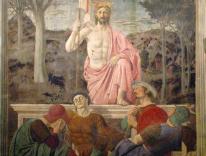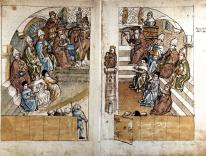The ongoing synodal process is not only the most important moment in the life of the Catholic Church since Vatican II. It’s also the most important moment about Vatican II, because it’s happening just as hard-to-ignore rifts over the council are emerging in global Catholicism. As Cardinal Mario Grech, Secretary General of the Synod of Bishops, recently told Vatican newspaper L’Osservatore Romano: “If today, at the invitation of the Holy Father, we are reflecting—and I hope that we will also make decisions—to make the Church more synodal, it is because the Holy Father wants to translate the teaching of the Second Vatican Council into daily life, especially the teaching on the Church, the ecclesiology of Vatican II.”
But global Catholicism is all over the place in terms of the reception of Vatican II. What’s happening in North America is different from what’s going on in Europe, which is different from the situation in Latin America. When it comes to a sense of “ownership” of the conciliar teaching by respective bishops’ conferences, there’s no consistency. Among many U.S. bishops, specifically, Vatican II is like the son who broke away from the family of unchanging Catholic tradition, to be mentioned only in mournful whispers, and for them, the synodal process seems to have opened a new stage of theological grief. That’s in stark contrast to the enthusiasm of Catholics who still believe in Vatican II’s largely unrealized promise of ecclesial rebirth and who think its work can resume.
Yet even within geographical regions, the reception of Vatican II is contested. February’s continental assembly of the synod in Prague offered ample evidence of the rifts in Europe, as visible efforts were made to push back against the German Catholic Church, whose just-concluded “synodal path” is the leading edge on reform of the ordained ministry, participation of women in Church leadership, and inclusivity for same-sex couples. At the same time, representatives from Eastern Europe thought there was too much talk about abuse, while pushback against more inclusion for LGBTQ Catholics was expressed as a truly synodal and ecumenical initiative opposed to a Westernizing, secularizing watering-down of the Catholic tradition.
It’s interesting that these divisions over the reception and acceptance of Vatican II within European and Western Catholicism have been revealed even as Francis’s ten-year pontificate has moved Catholicism away from its identification with those countries and cultures.
The splits have less to do with the finer points of dogma and doctrine (as was typically the case for the councils of the first millennium regarding Christology and the Trinity) and more to do with the translation of Vatican II’s teaching in the social and political sphere and on Church governance. In some ways the Eastern and Western churches are at different places “in time.” (The divide on gay rights is one big example.) Russian novelist and anti-Communist dissident Aleksandr Solzhenitsyn famously said that Russia missed the twentieth century. You could say that in some ways Eastern European Catholicism similarly missed the age of Vatican II and the early post–Vatican II era, or lived the latter half of the century in a very different way. Thus there is no one common narrative about twentieth-century Catholic history regarding Vatican II. Sometimes these differences in the narrative are stark; consider, for example, the differing historical assessments of the successes—or, according to influential Eastern European and U.S. Catholic intellectuals, the failures—of the Vatican’s Ostpolitik in engaging Soviet Russia and the Communist countries in the 1960s and ’70s.
The lack of a common narrative suggests that we really need to take a hard look at the world as it is today if we want to realize the potential of the synodal process in terms of the reception of Vatican II. The council, called by Pope John XXIII, was an updating of the council of Trent; it took stock of the end of European Christendom while rebalancing the intransigence of Vatican I and consecrating the post-1945 Catholic embrace of constitutional, democratic values. In theology, it was a moment of both ressourcement and aggiornamento. It also came at the culmination of three centuries of expanding horizons, from the Enlightenment in the 1700s to democratization and decolonization in the second half of the 1900s, a world that was more interconnected and in which there was the real promise of greater rights and expanded opportunities. And more possibilities for the Church as well—in terms of evangelization, religious liberty, ecumenism, missionary activity, and freedom of education.
So just what deserves a hard look at this moment in the synodal process? Start with the decline of global democracy, which has become a theological problem in light of Vatican II’s cautious but unambiguous coupling of Catholicism and political modernity. In addition to the divergent paths in Catholicism, this has also led to a significant shrinking in what Vatican II scholar Gilles Routhier once called the “horizons of expectations” for the Church in its new relationship with the world. These horizons allowed Vatican II to adopt a “posture of citizenship” in the realm of Western, secular society and politics. Catholics today, especially young Catholics, seem to be left with reduced expectations. They find themselves in very different places regarding their social, economic, and political systems, and in terms of what they believe about the Church and liberal democracy. From Trumpism in the United States to the relationship between illiberal and anti-liberal Catholicism and politics in Italy, Spain, and Poland, it’s a global phenomenon. In this sense, the bold proposals coming from the German Synod—though theology- and culture-specific—are also unique from the socio-economic point of view. Doctrinal questions aside, the “special path” taken by the German Synod is a particular reflection of the country’s economic fortune relative to the continent’s more troubled nations.
But if the inability of the secular elites to guarantee the economic, social, and political promises of liberal democracy has led to the shift toward authoritarian, populist, and illiberal political forces, something similar has occurred at the ecclesial level. Vatican II was a time of rising expectations for theology, for how much it could transform the Church and the world. These last sixty years have confirmed and accelerated some of the great turns of Vatican II in terms of doctrinal development, such as the Church’s relationship with Judaism and an interfaith approach to the question of God. But we should also consider the perceived betrayal of expectations—universalism, egalitarianism—and the rift this has created between the people and the “elites,” including clerical elites, intellectuals, and the Catholic political class.
In place of those expanding horizons we seem to be faced with a re-emergence of the “hard sayings” left behind by Vatican II, the stumbling blocks for ecumenism, interfaith dialogue, Church-world relations, and intra-ecclesial relations. Something the leaders of the Synod cannot quite say openly is that the Catholic Church must, in different ways in different localities, start a process of re-learning and “traditioning” Vatican II. The trouble is that in the public square of this century, the West is more distrustful—not more trusting—of the Church than it was in the 1960s, contrary to the expectations of Vatican II.
We’re in a situation like the one Cardinal Robert Bellarmine observed in 1600, when the council of Trent's application was seen as a failure requiring a restart. For some, the Second Vatican Council was the promising reddening of a dawn; for others, the sad reddening of a sunset. In any case, we now face the twenty-first century—and the success of synodality will hinge on far more than a ressourcement to the sources of Vatican II.
Please email comments to [email protected] and join the conversation on our Facebook page.
Previous Story
On Tradition and the Passion Play
Next Story
Christians and the Torah

